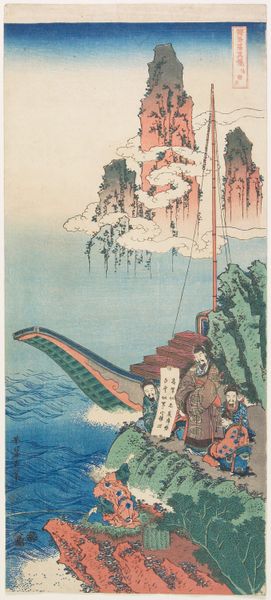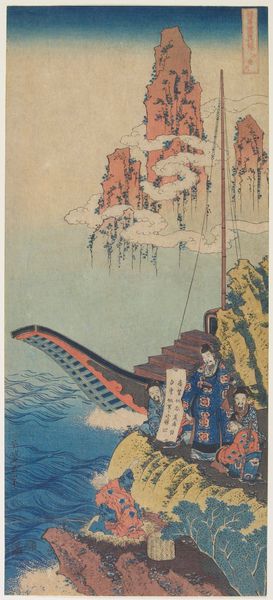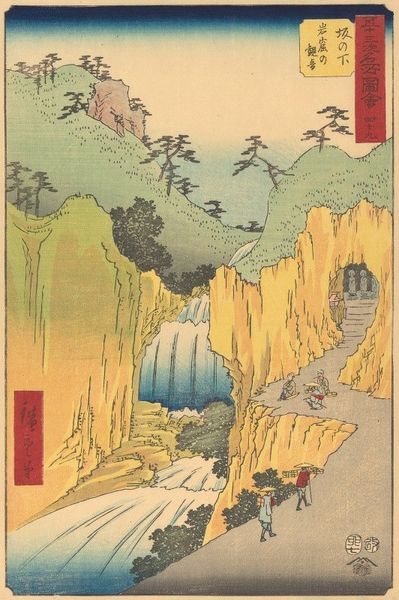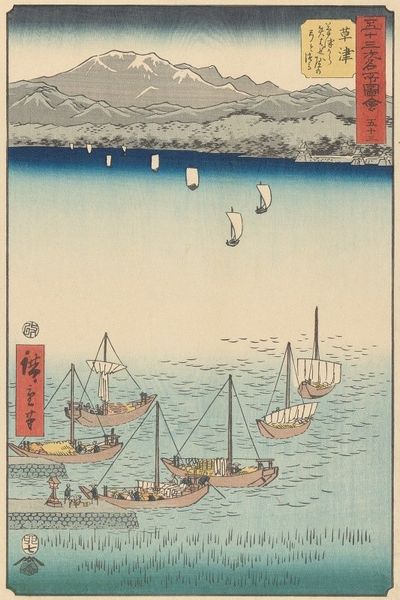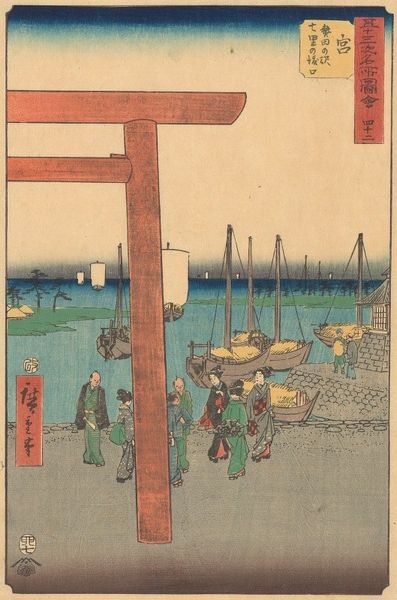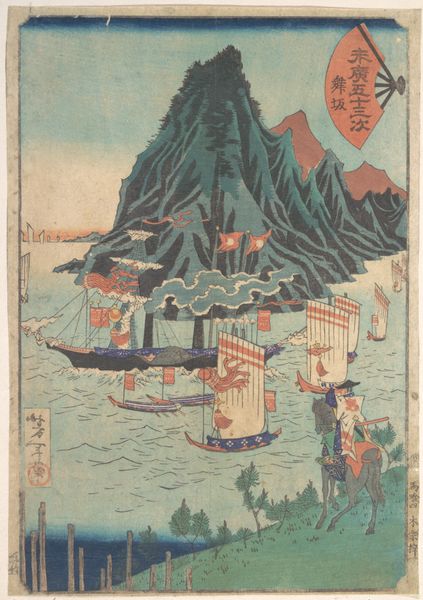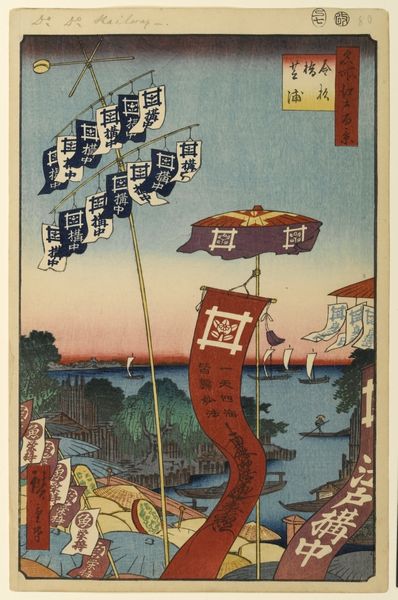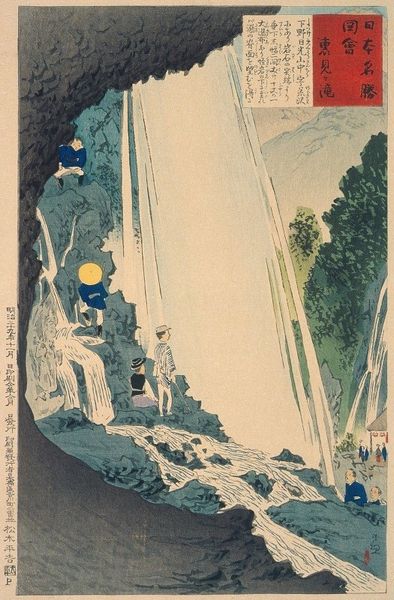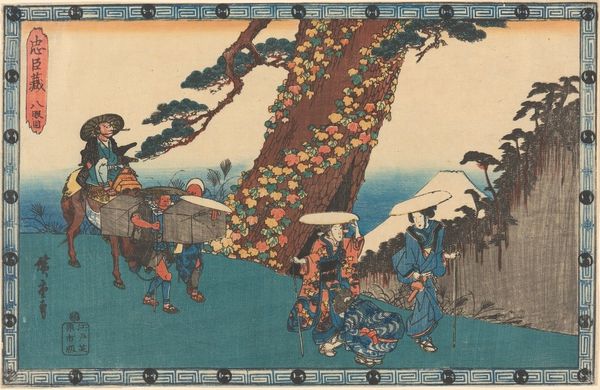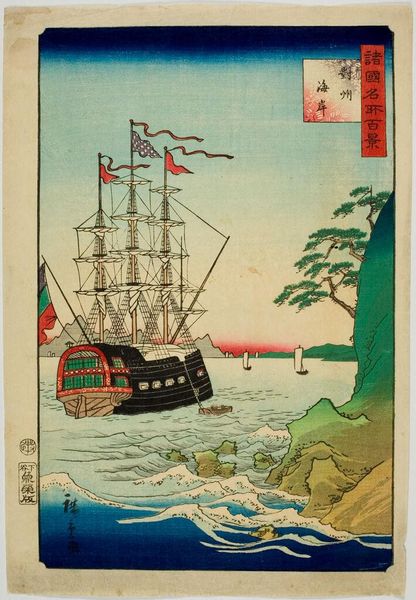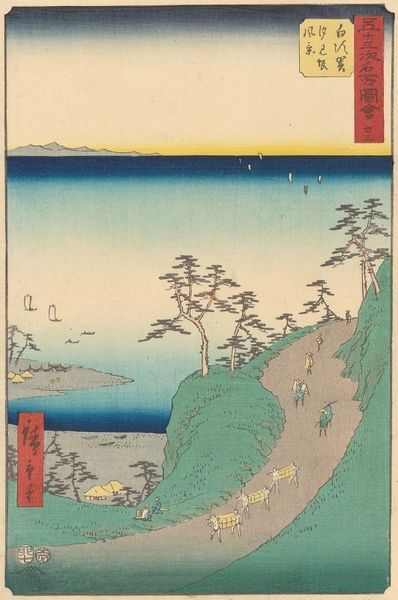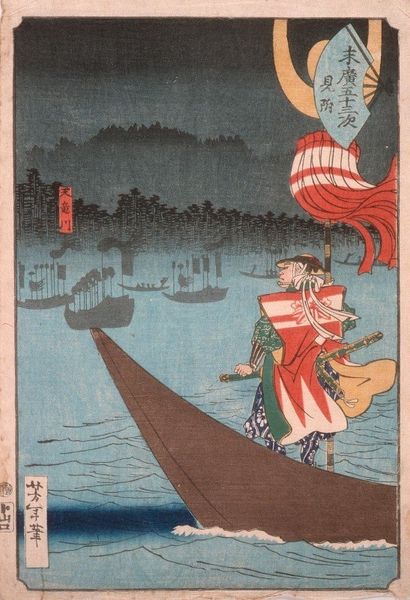
Bai Juyi (Hakurakuten), from the series A True Mirror of Chinese and Japanese Poetry (Shika shashin kyÅ) c. 1833
0:00
0:00
Copyright: CC0 1.0
Curator: This woodblock print by Hokusai portrays Bai Juyi, also known as Hakurakuten in Japan, a renowned Chinese poet. The image comes from the series "A True Mirror of Chinese and Japanese Poetry." Editor: The scene feels so delicately balanced; the vibrant waves almost overwhelm the earthy tones of the shore and the figures clustered there. The colors suggest a tension between nature's force and human endeavor. Curator: The print likely references Bai Juyi's exile and reflects the cultural exchange through poetry that was so important to artistic circles at the time. The print serves as a visual commentary on the social role of poets and scholars. Editor: And the way Hokusai renders the scene – look at the carving of the waves, the precise lines of the clothing – it speaks to a very particular craft and the high value placed on skilled artisans. Curator: Indeed, considering the social context of Edo-period Japan, Hokusai's work often promoted cultural literacy, subtly shaping public understanding of history and identity. Editor: The layering of materials and inks really emphasizes the textures; it is so tactile. Seeing the means of production makes us more aware of consumption. Curator: It's fascinating how a single print can reveal so much about the world it was created in. Editor: Agreed, considering the labor that went into it adds another layer of meaning.
Comments
No comments
Be the first to comment and join the conversation on the ultimate creative platform.
